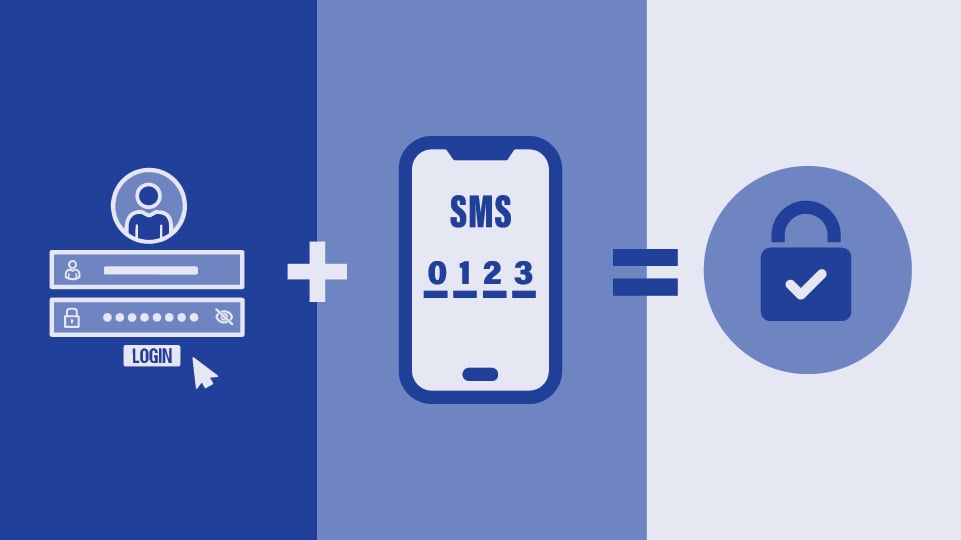Top 3 Reasons to Implement Multi-Factor Authentication
Passwords often aren’t enough to keep your information secure. Rather than simply relying on a password to provide access, multi-factor authentication requires an additional layer of security to validate your access, so we can make sure it is really you before we grant you your valuable access. Adding a second method of validation adds more security, and makes it more difficult for any outsiders to try and log in, and prevents 99% of password-based cybercrime.

What is Multi-factor Authentication?
Multi-factor authentication, or MFA, protects your logins (and thus, your data and applications) by requiring a second source of validation before granting valuable access to users. Multi-factor authentication appears in a variety of ways, depending on what is most effective for a specific organization. Common examples of multi-factor authentication include one-time passcodes and second-factor authentication on an additional device, or even biometric authentication like facial recognition fingerprints, etc.
Why is Multi-factor Authentication recommended?
MFA enables organizations to limit access to only verified users before they can gain entry to critical systems. As organizations improve workflows by digitizing and automating data and processes, the need for security increases. Exploiting user login data has been a strategy used by hackers for a long time, so verifying user identity has become increasingly necessary.
Authentication based on usernames and passwords alone has become increasingly unreliable. Users may get into the habit of using the same passwords across multiple accounts, lack the necessary complexity, or even avoid changing their passwords regularly. This all leads to easily acquiring user’s passwords for malicious intent via hacking, phishing and/or malware.
How does Multi-factor Authentication work?
MFA requires means of verification that unauthorized users won't have. Since passwords are insufficient for verifying identity, MFA requires another piece of evidence to verify identity. The theory is that even if malicious characters can impersonate a user one way, they won't be able to provide two pieces of verification or more.

Now that we’ve covered a basic understanding of Multi-factor Authentication, why it is recommended and how it works, here are Matthijssen’s top 3 reasons to implement Multi-Factor Authentication:
![]() 1. Reduced Costs
1. Reduced Costs
An attack on your network can be costly. Strengthening your security to successfully defend your organization against attacks can provide a return on investment that covers the expense of an MFA solution.
![]() 2. Improved Trust
2. Improved Trust
Users–especially customers–will feel more secure overall using a second method of authentication before accessing their data, knowing there is extra security keeping their information secure. This improved sense of trust from any kind of stakeholder means MFA becomes a competitive advantage.
![]() 3.Easier Logins
3.Easier Logins
With technological advances, MFA logins have become easier. Implementing more passive second-factor authentication, like fingerprint scanning and facial recognition, it’s become faster to validate a user’s access in order to log in quickly and make the most of a user’s time.
Multi-factor Authentication can be personalized to fit the needs of every organization. Learn about methods and how to start implementing MFA within your organization, contact our team of experts today.












